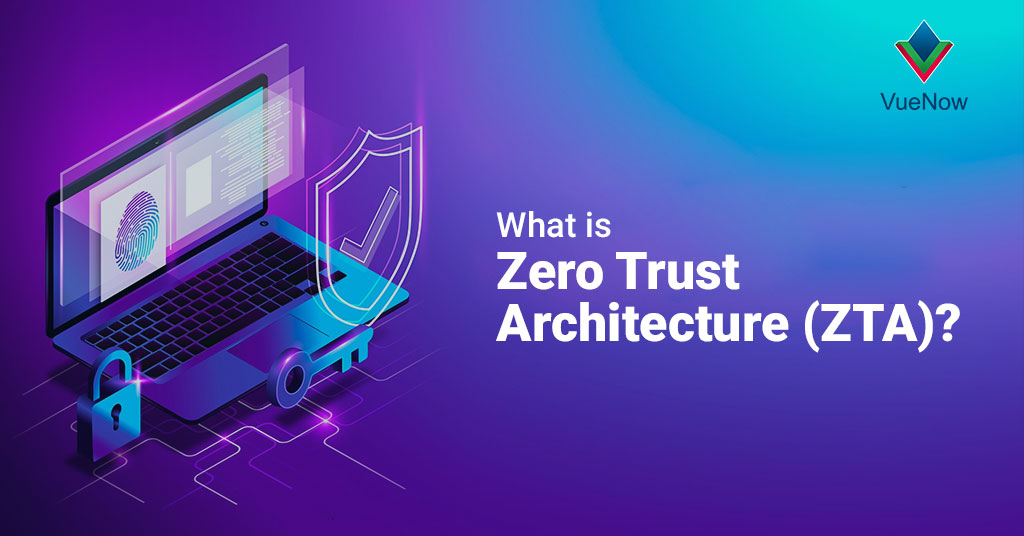
Is your company’s data a treasure vault? Recently, protecting the company’s data meant building a strong and impenetrable barrier around it. However, in modern times a different approach is needed. Zero Trust Architecture (ZTA) is likely to have multiple layers of security checks in and out. It ensures that only authorized people and devices are allowed to access specific company’s data. ZTA is a new kind of Cyber Security. Unlike the traditional mode of a perimeter-based security model, it works in a different manner, where everything inside a network is trusted by default. According to ZTA threats can be both from outside and inside so, it verifies everyone and everything before trying to connect to company resources. Whenever anyone tries to access any data or wherever they are located they are verified first.
As ZTA stands for new security model let's also find out the benefits it offers to the users:
Enhanced Security and Visibility
ZTA’s biggest advantage is that it can provide greater visibility and control over who is accessing your company’s data. With the implementation of ZTA, the organization gain insights into several parts like which device is trying to connect, from where they are connecting and what are they trying to do.
Reduced Attack Surface
Traditional security models usually generate large attacks surface. It is because once anyone gets past the outer defences, they can access the network. ZTA reduces the risk of this attack surface as it does the segmentation of the network in small parts or microsegmentation.
Containments of Threats
When any attacker breaks out into the network, ZTA limits the damage as it isolates the compromised area. This is how ZTA prevents the widespread of the damage by the attacker across the organization.
What are the Technologies Behind the Zero Trust Architectures?
Let’s come across the technologies behind ZTA, that make it the best security model:
User Authentication and Access Management
Authentication and Access Management are the basic and essential principles of ZTA. In this, the verification of the user’s identity and devices is required before accessing the company resources. Authentication ensures that only the authorized people can access the data or perform any actions within the network.
Identity and Access Management (IAM)
IAM systems play a significant role in ZTA as they manage user permissions and access rights. These systems define who can access what in the organization’s network and ensure that each user has an appropriate level of access based on their roles and responsibilities.
Multi-factor Authentication (MFA)
ZTA often integrates multi-factor authentication (MFA) to make user authentication stronger. It requires the user to provide more than one form of verification like a password and fingerprint scan to gain access.
Endpoint Protection
Endpoints include devices like computers, smartphones and tablets that are the common target of cyber-attackers. ZTA protects these endpoints from malware, unauthorized access and other security threats. Endpoint protection solutions consist of antivirus software, encryption tools, device management and monitoring policies.
Zero-trust Network Access (ZTNA)
ZTNA technologies enable organizations to securely connect users and devices to applications and services, regardless of their location. ZTNA solutions verify the identity and security posture of each device before allowing access to sensitive resources.
Microsegmentation
Microsegmentation divides the network into smaller, isolated segments or zones. Each segment has its own set of security policies and controls, restricting lateral movement within the network. By implementing microsegmentation, organizations can enforce stricter access controls and contain potential threats within isolated areas.
1. Understand Your Architecture
Organizations should conduct a thorough assessment of their existing network architecture, including users, devices, applications and data flows before implementing ZTA. This helps to identify the vulnerabilities and determine the appropriate security measures.
2. Establish Strong Device Identities
Each device accessing the network should have a unique identity that is verified before granting access. Strong device identities enable organizations to enforce security policies based on device type, ownership and compliance status.
3. Implement Comprehensive Monitoring
Effective monitoring detects and responds to security incidents in real-time. Organizations should deploy monitoring tools that provide visibility into network activity and user behaviour. Regular monitoring helps identify unauthorized access attempts and security threats before they escalate.
4. Emphasize Network Security
In a ZTA environment, Organizations should adopt a zero-trust approach which means verifying every network request and assuming that threats are already present in the network. Organizations can protect sensitive information from unauthorized access by implementing strict access controls, encryption protocols and security policies.
Zero Trust Architecture represents a paradigm shift in cybersecurity, focusing on continuous verification and strict access controls to protect organizational assets from threats. By implementing ZTA principles and using advanced technologies, organizations can enhance their security posture, reduce the risk of data breaches and safeguard sensitive information in today's interconnected world.

IaaS experts in Edge Data Centers, Co-location, and Network Management, delivering precise, competitive solutions.
© 2024 VueNowOnline.All Rights Reserved.
We use cookies to ensure that we give you the best experience on our website. By continuing, you accept all cookies.